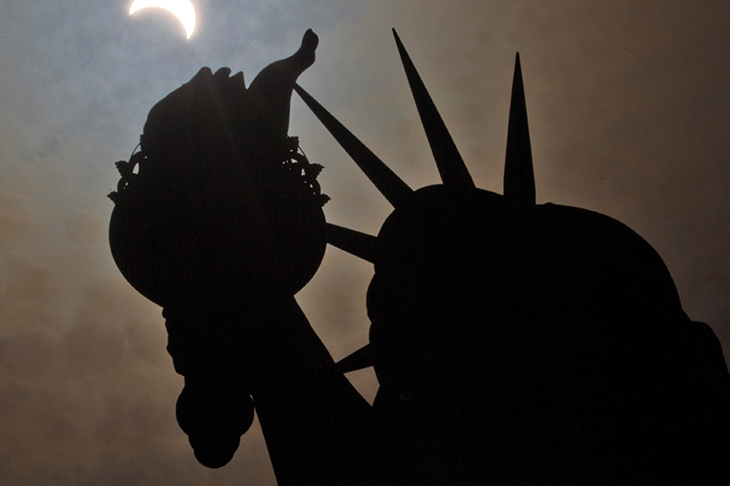Immigrants to the United States in the late 19th century discovered in Upper New York Bay, after a long, uncomfortable trans-Atlantic journey, a real portal and a symbolic one. There was Ellis Island: designer, William A. Boring. Then there was the Statue of Liberty on neighbouring Bedloe’s Island: designer, Frédéric-Auguste Bartholdi. The first was a practical introduction to America, where you got processed; the second a more mystical one, where you got inspired.
It’s a good moment to publish an account of the Statue of Liberty, perhaps the world’s most famous sculpture. One reason: in London there’s an evolving debate about what a monument should be, stimulated by the clumsy Holocaust Memorial proposed near Parliament. The other reason: never have American principles of liberty been under more intense international scrutiny. Dave Eggers caught this mood last year in Her Right Foot, where he found Liberty’s pedal extremity, striding forth, to be a ‘powerful message of acceptance’.
Everyone recalls, at some level, Emma Lazarus’s lines from ‘The New Colossus’: ‘Give me your poor, your huddled masses yearning to be free.’ Exactly so. That’s Liberty’s message to the ‘wretched refuse’ of Europe. And we all remember that Liberty was France’s ‘gift’ to the United States. But the standard history of Liberty is Marvin Trachtenberg’s, now over 40 years old. So, Francesca Lidia Viano’s revisionist account of the statue’s ‘unlikely origins’ is a welcome corrective to settled opinion. Viano is a Harvard academic specialising in trans-Atlantic economic and political exchanges. Sentinel was originally published in Italian as La statua della Liberta: Una storia globale.
Essentially, three people were involved in this global history. First, an eccentric freemason intello called Edouard Lefebvre de Laboulaye, whose idea it was. He was the sort of person who, if invited to attend a magnetic séance in a fumoir, most likely would accept.








Comments
Join the debate for just £1 a month
Be part of the conversation with other Spectator readers by getting your first three months for £3.
UNLOCK ACCESS Just £1 a monthAlready a subscriber? Log in